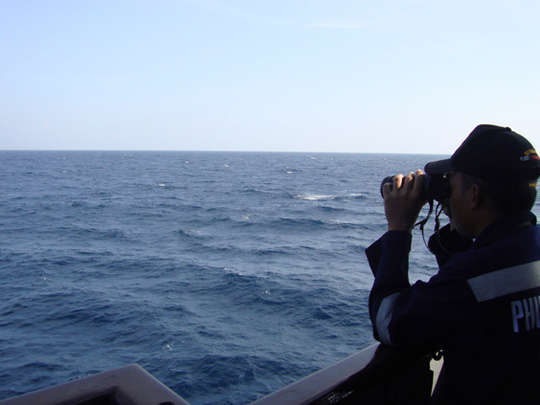
Never before has an airliner simply vanished into thin air. And never before have experts failed to offer at least the slightest scintilla of scientific fact to counter all of the fiction that has grown up over the disappearance of Malaysia Airlines Flight 370.
For the past week, every possible explanation has been speculated upon. The flight, with 239 souls on board, from Kuala Lumpur to Beijing, vanished about an hour after taking off last Friday night.
Why, incidentally, are those on a plane referred to as souls? Never, in all the times on an aircraft have you ever heard yourself referred to as a ‘soul’? “All souls are on board, doors to manual and crosscheck.”
What is sure now, though, after a week of silence, is that those who embarked on the Boeing 777-200, who struggled to get their luggage into the overhead compartments, snapped their seat belts together, talked through the safety demonstration and who placed their seat-backs in an upright position and stowed their table tops for take off, are indeed now dearly departed on MH370.
What makes this all the more incomprehensible is that there is nothing — not a clue, not a trace, not a shred — to say what happened.
There is a reality to that when we all board a plane, we hand over our individual rights and freedoms to the airline and its crew. We enter into a life-and-death covenant that we will endure the curt service and economy-class chicken, the trolly dollies and the interminable wait to use the lavatories while the seat-belt sign is off, in return that we will arrive safe and sound at our destination safe and round. And hopefully our luggage will be there too.
Any civil liberties we have in normal life are surrendered on checking in and remain in a state of suspended animation and aviation until we disembark.
If something goes wrong, we want to know. We want to know the weather conditions during the flight, we need to be assured that the last piece of luggage has been loaded and that the flying time we must endure is as brief as possible. Why? Because that’s the only information we can have.
We trust that the mechanics are good, the plane design is sound; the wings aren’t fractured; the hydraulics aren’t leaky; the fuel is sufficient; the crew properly trained; the pilots properly certified; the communications are clear; the airfield traffic is properly directed; the air traffic control (ATC) systems are in place; the guy sitting at the ATC screen has not spilt a coffee over his keyboard as we have so carelessly done; and that the co-ordinated dance of a thousand and one people and a million and one things actually come together to make the flight happen. And that is repeated again and again for each and every flight where ever it is flying to or from. That is trust. And that is why it is a life-and-death covenant signed with parties we will never have knowledge of nor contact with.
This past week, while MH370 was making news for all the wrong reasons, the World Wide Web turned 25.
For all of it is good, the internet has spawned a generation of geeks and provided sustenance for conspiracy theorists and nutcases who believe that there are alien forces at work on our little blue ball we all share as we hurtle through the space-and-time continuum.
And google MH370 and you are met with a barrage of theories and explanations. It was hit by a missile. Elves took it away. It is hijacked and is being held by the North Koreans. Blame a shift in the magnetic poles. It is in an alternative universe. Its disappearance was the real-life television series Lost. Nostradamus predicted it. Aliens took it.
Every aviation expert or pilot who wants to build a public profile has speculated on it. We all have learnt more in this past week about transponder codes, real-time monitoring of engines, Boeing monitoring their planes once they are in the sky, radars are fallible, sudden decompression of the cabin or whatever other theory is the flavour of the moment based on the twittersphere or googleology.
But we still know nothing for sure.
In June, 1985 — before there was internet, when satellites were Soviet republics and browsing was something you did at the adult magazines on the top shelf of the local shop — Sikh terrorists blew an Air India Boeing 747 from the sky. The bomb went off about 300 kilometres from the west coast of Ireland — every soul on board died instantly, sent to a watery grave as collateral damage in the cause of a Sikh homeland.
For three days, as a young journalist, I watched from a Cork quayside as the wreckage came ashore. Luggage that was stowed away in overhead compartments; bags that had been loaded into the hold; seat belts that had been snapped around passengers; polystyrene that had insulated the fuselage; small pieces of metal that had floated; tables that had been in an upright position; trays that held economy-class chicken — and bits of bodies of souls that had talked through the safety demonstration.
There is not much that floats when an airliner crashes violently into the sea. Whatever the current technology of transponders and real-time monitoring, there is little that stays on the surface.
May their souls rest peacefully.









